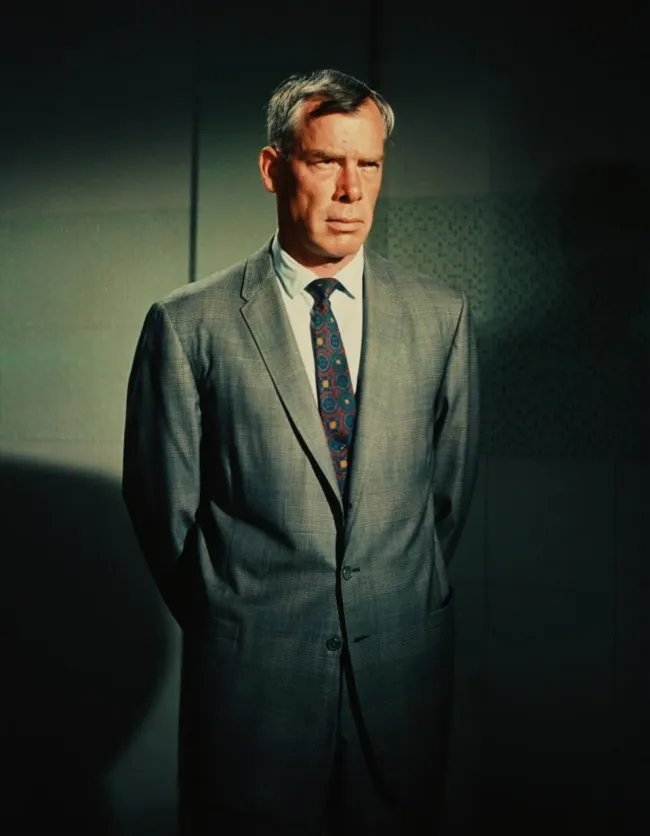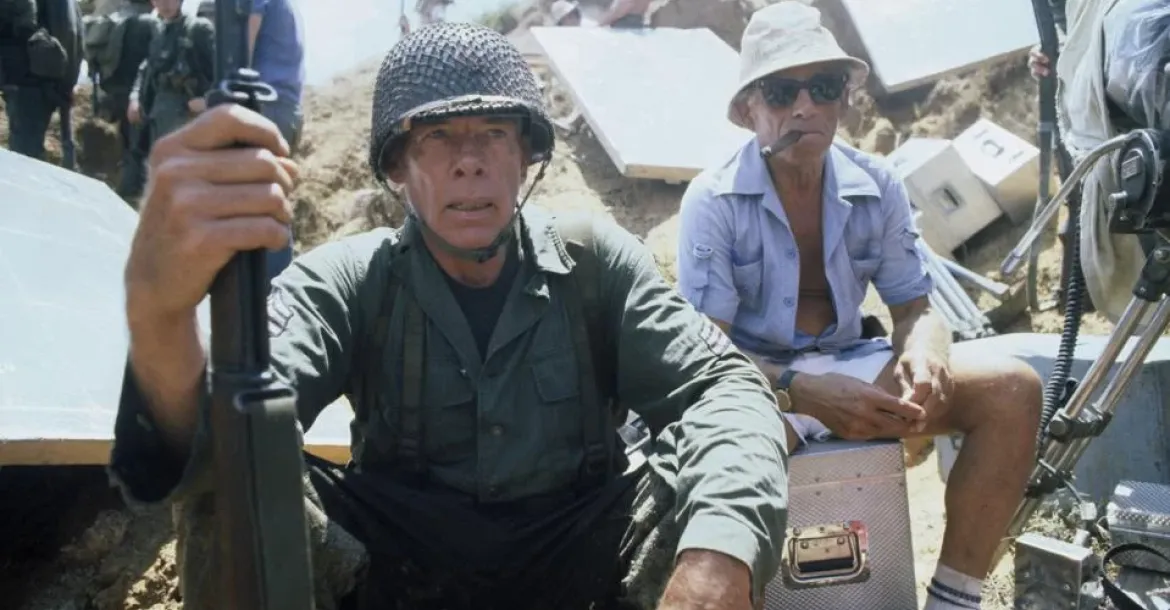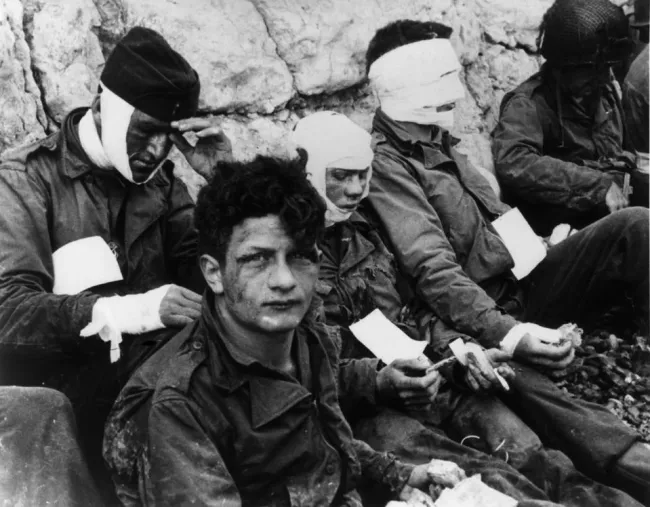The Best World War II Film You Haven’t Seen Is Sam Fuller’s The Big Red One
This Memorial Day, the standard lists of’must-see’ war films can be found here, here, here, and everywhere. Turner Classic Movies will air Sergeant York and The Green Berets during its annual four-day marathon, and Netflix continues to nudge me to spin its Price Is Right wheel of American Sniper-inspired ‘warcore.’ However, despite the fact that the United States has spent the majority of the twenty-first century waging ‘forever wars,’ World War II remains the genre’s archetype. This is partly because the ‘Greatest Generation’ provides us with a lens through which to view mass historical experience. This is partly because the way many of us first learned about World War II was intrinsically cinematic. This year, skip the ‘best-of’ WWII epics and instead watch Sam Fuller’s The Big Red One, an underrated masterpiece from the iconoclastic filmmaker who passed on The Young Lions, The Longest Day, and Patton.
The Big Red One follows four GIs under the wing of Lee Marvin’s unnamed sergeant through WWII’s North African and European theaters – French Algeria, Italy, Omaha Beach, Belgium, and Germany – before concluding with the liberation of Czechoslovakia’s Falkenau concentration camp. Much of the material is based on Fuller’s own experiences during the war. Fuller, dubbed the ‘Hemingway of the Bronx,’ had worked as a tabloid reporter for the New York Graphic since he was 17, and enlisted at the’mature’ age of 29 to cover what he dubbed ‘the century’s crime.’ When he mobilized with the 1st Infantry Division, he left with scriptwriting credit for Hats Off and entrusted his mother with the manuscript for his pulp thriller, The Dark Page. He returned to the United States with a Silver Star, a Bronze Star, and a Purple Heart, as well as a strong personal dislike for George S. Patton, whom Fuller believed was more concerned with headlines than with men. On the other hand, Fuller, who began directing war films with 1951’s The Steel Helmet, had an unwavering commitment to honoring GIs ‘by showing the truth.’
The cigar-chomping Private Zab serves as an obvious stand-in for Fuller in the film, recording everything as it happens. There’s an excellent scene in which Zab attempts to convince another GI that he wrote the Armed Services Edition paperback, The Dark Deadline, that his squadmate is currently reading. The other GI either cannot comprehend this or perishes before completing Zab’s book, another of Fuller’s ‘dead men with temporary use of their arms and legs.’ I’m reminded of Roger Ebert’s observation that “A’ films are about war, whereas ‘B’ films are about soldiers.” If you want to talk about ‘war literature’ or ‘war films’ with a capital W, then the poor ‘dogface’ GI’s death is ironic, metatextual, and aren’t you a bright one for seeing that? However, if this is true, it is tragic. That is why you should see The Big Red One before it becomes a technique-driven ‘classic.’ The opening title card, like a ‘Big Red 1’ service patch, wears the film’s heart on its sleeve: ‘this is a fictional life based on a true story.’ Facts are always more sloppily constructed and larger than life. They are as formulaic as life itself. It’s B-movie fare.

The scope of Fuller’s film is comparable to that of other war epics, but the pace is different. The Army plans major combat operations using a plot structure akin to that of Jerry Bruckheimer – rising action, a big climax, and a denouement in which everything is resolved – and films like The Longest Day or A Bridge Too Far reflect this. Patton synchronizes the war narrative with George C. Scott’s scene-stealing character study. Saving Private Ryan downplays the heroics of the common man. On the other hand, the Big Red One views the war as a series of interconnected moments. Occasionally, these are cinematic images – GIs scurrying past Mussolini propaganda in street-to-street combat, a Nazi hiding behind a crucifix, a mad horse galloping across a battlefield – but more often than not, they are vignettes, situations. In exchange for help burying his mother, a child leads the GIs to German gun emplacements. In a Belgian insane asylum, a skirmish occurs. A spanking is meted out to a juvenile sniper. Fuller was unconcerned about war’s plot. He desired to demonstrate how memories reintroduce distinct patterns to life. A tone poem, The Big Red One.

Fuller experienced a visceral psychological experience while writing the film. He would awaken in a cold sweat as a result of nightmares about his time in the War. He films a watch on a dead man’s arm in The Big Red One because he is haunted by the sight of a watch in the bloody water of Omaha Beach. He wrote about the moment at Falkenau because, as a GI in 1945, he captured on 16mm film the burial of Falkenau’s victims. It’s chilling to see him years later, in Falkenau: Vision de l’Impossible, watching his own 16mm recording. Just as he does in The Big Red One, he organizes his recollections around moments. Fuller doesn’t simply show you the aftermath of a battle in which a woman happens to give birth in a captured Nazi tank, as Charles Taylor describes one of the film’s ‘truly surreal’ moments. Rather than that, he provides a moment with ‘hanging ammunition belts used as stirrups, the bullets aimed at the pregnant woman’s belly.’ According to Hitchcock, the plot is merely a vehicle for stringing together such brutal poetic sequences.
If Zab represents Fuller as a young reporter, then Lee Marvin’s sergeant represents Fuller as a semi-autobiographical filmmaker. It is one of Lee Marvin’s finest performances, in part due to its restraint. Fuller explains, ‘He’s a carpenter of death.’ ‘For 10,000 years, the sergeants of this world have killed young men.’ However, as a result of this, he is the only character with sufficient memory. In a flashback to WWI, we see him assassinating a German soldier prior to learning of the Armistice. He repeats the act at the film’s conclusion, stabbing his German counterpart, Feldwebel Schroeder, before learning that WWII has concluded as well. Fuller reflected, ‘The first face of death is imprinted on me like a fossil, never to fade away.’ The Big Red One implies that the remainder of the verses rhyme in memory. Saving Schroeder is a way for Fuller’s alter-ego sergeant to remind himself to resist. Fuller, Marvin – the elder poets are always the most authentic, if you live long enough to believe them.

